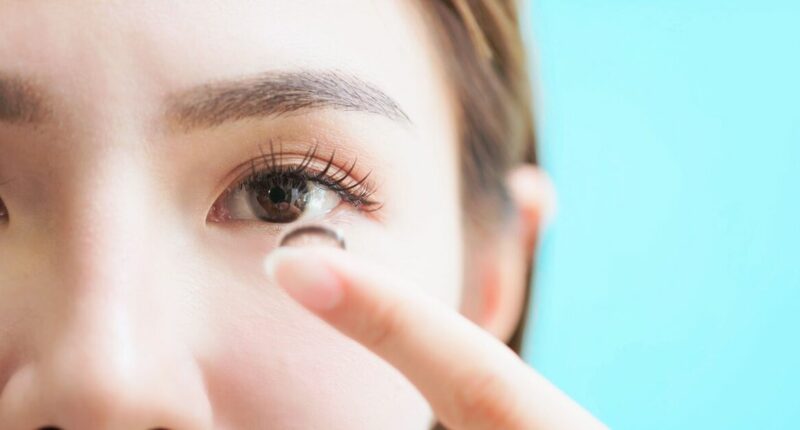Share this @internewscast.com
Contact lenses offer a convenient alternative to traditional glasses, letting you enjoy clear vision without the hassle of coordinating with your wardrobe or worrying about breakages.
Once you get used to wearing contact lenses, it can become such a routine that you might forget they’re even there until it’s time to remove them at night.
However, caution is still necessary when using contact lenses. In fact, certain activities should be avoided entirely if you usually wear contacts and don’t plan to remove them for these activities.
In a TikTok video by Doctor Suraj Kukadia, also known as Dr. Sooj, viewers were cautioned against swimming with contact lenses as it poses severe risks to eye health.
The video starts with footage of a woman swimming, accompanied by text that explains her experience: “Swimming with contacts led to temporary vision loss in one eye for six months, just hours later.”
Dr Sooj then used the rest of the video to explain why swimming with contact lenses in can be dangerous.
Dr. Sooj explained: “Swimming in contact lenses is highly risky. This danger applies to all bodies of water such as lakes, lagoons, hot tubs, and pools. It significantly raises the likelihood of developing an infection.”
“Water can contain a bug called Acanthamoeba. It’s a microscopic organism that can attach to your contact lenses and can get trapped on the surface of the eye, and can cause a serious infection called Acanthamoeba Keratitis.
“It’s incredibly painful, it’s really hard to treat, and in some cases, it can cause permanent vision loss. If you do have to wear contacts in the water, please use daily disposable lenses and throw them away immediately afterwards.”
The doctor recommended ditching the contacts for prescription goggles while swimming.
What is Acanthamoeba keratitis?
According to Moorfields Eye Hospital, Acanthamoeba keratitis (AK) is a very painful cornea infection caused by the organism Acanthamoeba. Acanthamoeba is found in bodies of water such as lakes, oceans, and rivers but can also be found in domestic tap water, swimming pools, hot tubs, soil, and air.
Acanthamoeba organisms do not generally cause harm to humans, as we come into contact with them every day when we wash, swim, or drink water, but they can be a problem if they infect the cornea. This is most common in people who wear contact lenses as the organism can get trapped against the eye, but anyone with a corneal injury is susceptible to developing the infection.
Symptoms of Acanthamoeba keratitis
In the early stages of the infection, the cornea can become irregular due to inflammation, which may affect your vision. You may also have a sensitivity to light, and may find your eyes water more frequently.
Acanthamoeba keratitis is usually treated with antiseptic drops, which you may need to take as frequently as every hour for the first few days. If you believe you have Acanthamoeba keratitis, contact an eye care professional or your GP right away.













